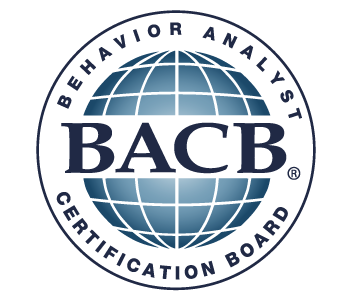Registered Behavior Technician
Online Certification Course from University of South Carolina Aiken
Program Description
Applied behavior analysis (ABA) is a science that uses the principles of learning and motivation to solve problems of behavior in children, adults, and seniors. A behavior technician is a paraprofessional that assists in delivering behavior-analytic services and practice under the direction and close supervision of a bachelor, masters, or PhD level certified behavior analyst. Behavior technicians work directly with the learners implementing the designed plan for behavior management. The goal of behavior analysis is to improve the quality of life of the clients/patients and their families.
Program Objectives
After completing this program, learners will be able to:
- Discuss the role and duties of the behavior technician in the service-delivery system.
- Discuss the various settings in which a behavior technician might work.
- Identify typical stages of cognitive, linguistic, physical, social, and emotional development.
- Discuss multiculturalism and Diversity issues in the field of applied behavior analysis.
- Identify strategies for maintaining currency in behavior technician skills and concepts.
- Properly prepare for data collection per facility protocols.
- Properly implement continuous and discontinuous measurement procedures.
- Properly implement permanent-product recording procedures.
- Efficiently and accurately enter data and update visual data representation using software commonly used in the workplace.
- Accurately describe behavior and environment in observable and measurable terms.
- Conduct preference assessments.
- Assist with various assessment procedures as directed by practitioner.
- Explain the purpose for and components of a written skill acquisition plan.
- Explain how to properly prepare for a session as required by the skill acquisition plan.
- Explain the proper use of contingencies of reinforcement.
- Explain and effectively implement discrete-trial and naturalistic teaching procedures.
- Explain and effectively implement discrimination training.
- Explain and effectively implement stimulus control transfer procedures.
- Explain and effectively implement prompt and prompt fading procedures.
- Explain and effectively implement generalization and maintenance procedures.
- Explain and effectively implement shaping procedures.
- Explain and effectively implement token economy procedures.
- Identify the essential components of a written behavior reduction plan.
- Describe common functions of behavior.
- Explain and implement interventions based on various modification of antecedents.
- Explain and implement various differential reinforcement procedures.
- Explain and implement extinction procedures.
- Explain and implement crisis/emergency procedures according to a facility’s protocol.
- Discuss effective communication skills and characteristics that are expected in the workplace.
- Explain how to report variables that might affect a client.
- Create objective session notes for service verification.
- Identify the legal, regulatory, and workplace data collection, storage, transportation, and documentation requirements.
- Explain ethical expectations for behavior technicians.
- Explain the RBT supervision requirements.
- Explain how to appropriately respond to feedback given with the goal of performance improvement.
- Discuss profession boundaries expected in the workplace.
- Discuss strategies for maintaining client dignity in the workplace.
- Identify the steps for becoming credentialed as an RBT.
Certification Opportunities
After completing this program, learners will have the opportunity to take the leading national/industry-recognized certification exam(s) essential to entry-level employment in this fast-growing field.
 |
Behavior Analyst Certificate Board (BACB) Registered Behavior Technician (RBT) |
|
Disclaimer: Once you have successfully completed this Behavioral Technician program, students are encouraged to pursue employment as a behavioral technician to gain valuable work experience prior to sitting for the RBT certification exam. For students interested in immediately pursuing RBT certification prior to employment – you will be required to complete a mandatory 40 hour live online instructor led program after you complete this online program. There is no additional cost for this 40-hour live online instructor led program. |
|
Optional Volunteer Externship Opportunity
Learners who complete this program are eligible to participate in an optional volunteer externship opportunity with a local company/agency/organization whose work aligns with this area of study in order to gain valuable hands-on experience. As learners progress through their eLearning program, an Externship Coordinator will reach out to coordinate placement.
Note: Additional documentation including health records, immunizations, drug-screening, criminal background checks, etc. may be required by the externship facility.

Requirements
- High School Diploma or GED
Program Details
- Mobile-Ready
- National Certification Opportunity
- All Textbooks & Materials
- Laptops Available
- 24/7 Learner Support
- Certificate of Completion
- Clinical Externship Opportunity